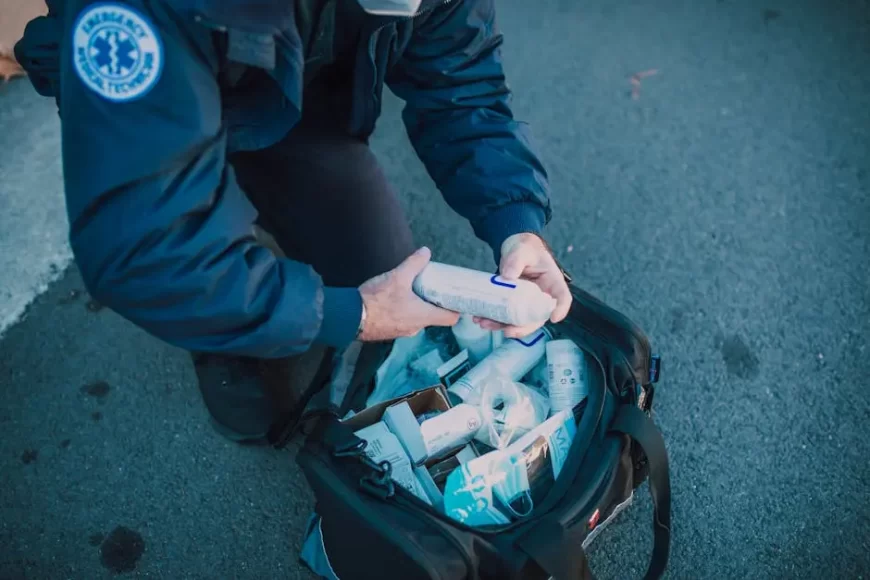- March 10, 2025
- By
- In Uncategorized
- 43
- 0

Being ready for the unexpected can make all the difference when you’re on the road. Having a well-stocked car can’t prevent accidents from happening, but it can certainly improve your response and make things easier if they do. Here’s a list of must-have items that will keep you prepared for any roadside emergency.
A comprehensive first aid kit can be a lifesaver in an emergency. Make sure yours includes band-aids, antiseptic wipes, gauze pads, and adhesive tape. In addition to these basics, consider adding an instant cold compress, scissors, and a CPR mouth barrier to ensure you’re equipped for most medical situations. In the unfortunate event of a serious accident, these tools can help stabilize a situation until professional help arrives. Regularly check the supplies in your first aid kit to ensure that nothing is expired or missing. After all, preparedness is key when it comes to health and safety. Consider augmenting this with a basic understanding of car accident preparedness.
A reliable flashlight is more than just a source of light; it’s an important tool in your safety arsenal. When your car breaks down at night, being able to illuminate dark surroundings can help you assess the situation and ensure your personal safety. Choose a flashlight with LED bulbs since they offer better brightness and battery efficiency. Always have spare batteries on hand, or opt for a model with a rechargeable battery. Some advanced flashlights even come with strobe or SOS modes to signal for help. Remember, being seen is crucial during unforeseen roadside emergencies, so make sure your flashlight is easy to access in your vehicle.
Imagine this: you get into your car, turn the key, and nothing happens—your battery’s dead. This scenario is frustrating but easily fixable if you have jumper cables. These cables provide the necessary jolt to jumpstart your car, enabling you to get back on your way without a hitch. Always ensure your jumper cables are at least six feet long for convenience, and consider familiarizing yourself with how to use them safely, keeping in mind the order of connecting and disconnecting the clamps. In the meantime, make sure your insurance covers emergency services that might come in handy in such situations.
A portable phone charger is an essential item for ensuring that your smartphone is always operational. In today’s digital age, your phone is your lifeline during an emergency —whether it’s calling for roadside assistance or navigating to safety. Invest in a high-capacity charger that can fully charge your phone multiple times. Keep it charged and stored in an easy-to-reach place within your car. Remember, the most advanced device is of little use if it’s dead when you need it most. By ensuring your phone remains charged, you’ll be ready to communicate, navigate, and coordinate necessary actions quickly during any unexpected events.
If you experience a breakdown or other roadside difficulties, reflective warning triangles can be pivotal in securing your safety. By placing them a measured distance behind your vehicle, they alert other drivers to your presence, significantly reducing the risk of secondary accidents. Best used in threes for optimal visibility—from varying distances—they provide an advance warning to oncoming traffic. Consider using them in conjunction with hazard lights for maximum effectiveness. Having reflective triangles makes a statement: safety first, always. Such precautions are readily available through trusted towing services and often come in kits that include instructions for proper deployment.
Regularly checking your tire pressure is an easy task that contributes significantly to overall safety. Incorrect tire pressure can lead to uneven tire wear, poor handling, and increased fuel consumption. A compact tire pressure gauge allows you to maintain the correct pressure with ease, ensuring that your tires perform efficiently and last longer. Aim to check your tire pressure monthly and especially before a long trip, as temperature changes can affect the air pressure within tires. In doing so, you not only safeguard yourself from potential tire-related mishaps but also experience smoother and more fuel-efficient rides.
Having a multipurpose tool kit in your car is akin to having a Swiss Army knife for minor car emergencies. It could save you from being stuck with a loose screw or a stubborn bolt that needs tightening. Equipped with essentials like screwdrivers, pliers, and wrenches, this kit can assist with numerous small repairs that could otherwise escalate into bigger problems. Choose a compact kit that fits comfortably in your vehicle, ensuring it’s easily accessible when needed most. With a tool kit on hand, you have the means to handle minor fixes that can get you safely back on the road, or at the very least, keep problems from worsening until professional help arrives.
A small car fire can swiftly transform into a major hazard, which is why having a fire extinguisher within reach is indispensable. Choose a model specifically rated for automotive use, such as those capable of handling Class B and C fires commonly fueled by gasoline, oil, and electronic equipment. Safely stowed yet easy to reach, it can allow you to act rapidly, potentially mitigating the risk and damage, and keeping you and any passengers out of harm’s way. An extinguisher is one of those items you might never need, but even a single use justifies its cost and peace of mind. Additionally, ensure everyone in your vehicle knows how to operate it effectively.
In urgent situations where you’re stranded or need to {attract}=https://mvtow.com/services/ attention rapidly, flares become indispensable tools. Bright and buoyant in all weather, flares create a visible signal that can be seen from extensive distances, increasing your chances of quick assistance on isolated roads. While LED flares have become popular for their reusability, traditional ignitable flares are difficult to overlook due to their glowing intensity. Flares go beyond mere lighting—they provide effective communication of distress. Place them safely away from any flammable materials, and ensure they’re a part of pre-travel checks before embarking on any journey.